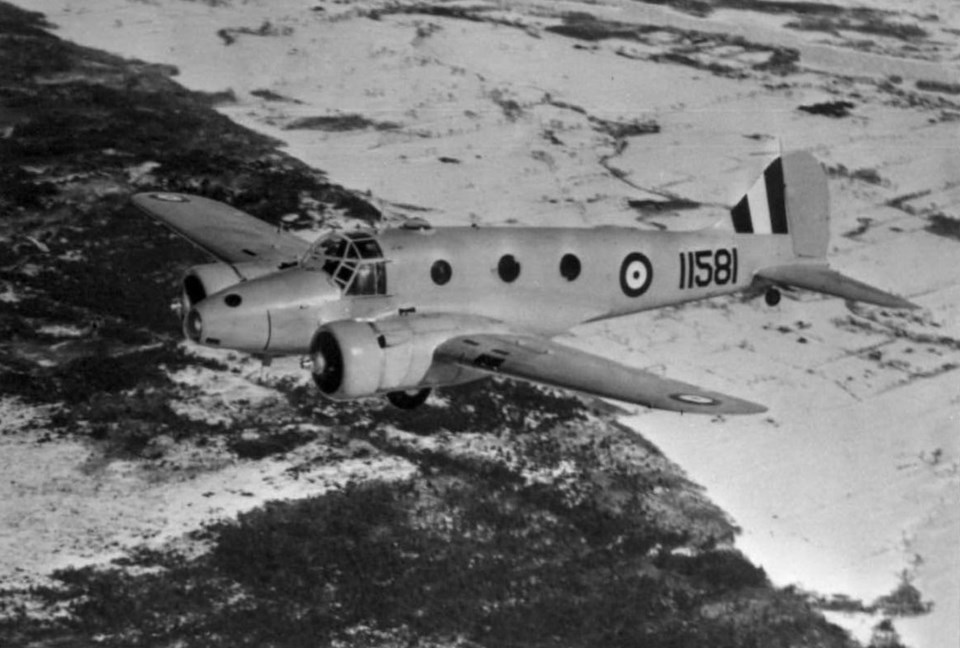HALIFAX — According to his Royal Canadian Air Force service records, 21-year-old Pilot Officer Bill Bennet was a fine airman.
Described as tall and wiry, his commanding officer noted in March 1944 that the Montreal man was also “enthusiastic and intelligent.” And as the Second World War in Europe entered its final phase that summer, Bennet was made a staff pilot at the RCAF station in Summerside, P.E.I., where he started training to fly reconnaissance aircraft or bombers.
On Aug. 6, 1944, Bennet was tasked with flying a twin-engine Avro Anson V training aircraft carrying two navigators and one radio operator. Their routine mission that Sunday was to fly east from Summerside to a point over the Gulf of St. Lawrence north of Cape Breton and then return.
But something went wrong over the water. The aircraft was well south of where it should have been. And as it entered a thick bank of fog, Bennet began a descent that he hoped would bring the plane below the haze.
Instead of emerging above the vast gulf, the aircraft suddenly plowed through a stand of small trees. Its wings, tail and one engine were torn off as it slammed into the side of Jerome Mountain on the western edge of Cape Breton Highlands National Park.
Bennet was badly injured, having suffered a fractured skull. Incredibly, the other three men had only minor wounds.
Given the steep, boggy terrain, it wasn’t until the next afternoon that a search party reached the remote crash site northeast of the Acadian community of Cheticamp, N.S. The volunteer searchers, most of them local men from the fishing village, were told Bennet had died during the night.
With the help of their rescuers, the three survivors — 20-year-old navigator John Robert Ogilvie and 22-year-old navigator William John Astle, both of Edmonton, and 22-year-old communications officer Jack Roy Burke of Wallaceburg, Ont. — managed to hike down the mountain by late Monday.
But it would take another day before Bennet’s body could be recovered. A local doctor and a member of the military stayed with Bennet's corpse through the night.
Jeff Noakes, Second World War historian at the Canadian War Museum in Ottawa, said an RCAF inquiry later found the plane’s compass wasn’t working properly. As well, he said investigators determined the navigators and the pilot weren’t communicating as well as they should have been.
“The RCAF ultimately concluded that they weren't 100 per cent sure why there was an error in the navigation,” Noakes said in an interview.
Under bright sunshine on Saturday, more than 80 years after the crash, a non-profit group based in Cheticamp — Les Amis du Plein Air — held a public ceremony to unveil two commemorative panels at a campsite in the shadow of the mountain. One panel is dedicated to the aircrew, the other to the local men sent to rescue them.
Among those in the crowd of about 50 people was one of Bennet’s nephews, 63-year-old Bill Bennet of Ottawa, who was named after his late uncle.
He said it was important for him and his two children, Liam and Nora, to travel to Cape Breton to be part of the unveiling.
“My son is 21,” Bill Bennet said, his voice cracking with emotion as he recalled his uncle was the same age when he died.
“I want to make them aware of our family’s connection to the war and what that means. It's also a chance to connect with the people of Cheticamp … about the efforts (their ancestors) made to rescue these men in this very rugged terrain …. I think of the sacrifice of my uncle, but there are so many more people involved in this whole story.”
Bill Bennet’s 65-year-old brother Doug, who travelled from Toronto with his wife Nancy and their children Nathan and Eliza, said his uncle’s tragic story illustrates the sacrifices made by those who took part in the British Commonwealth Air Training Program, often described as among Canada’s most important contributions to the war effort.
By the end of the war, the program had graduated more than 131,000 pilots, observers, flight engineers and other aircrew for the air forces of Canada, Britain, Australia and New Zealand. More than half joined the RCAF.
It was often dangerous work. In all, 856 trainees were killed, though some sources suggest the number is much higher.
“It was a huge cost,” Doug Bennet said before the ceremony began. “And they were almost all in their late teens and early 20s.”
Erin Gregory, curator at the Canadian Aviation and Space Museum in Ottawa, said most Canadians are more familiar with the sacrifices made overseas during the Second World War.
“It's important to mark this moment of service and sacrifice at home, which is at least as important as what happened overseas,” Gregory said. "As part of the war effort, it was extremely important and it was dangerous.”
This report by The Canadian Press was first published Aug. 2, 2025.
Michael MacDonald, The Canadian Press



